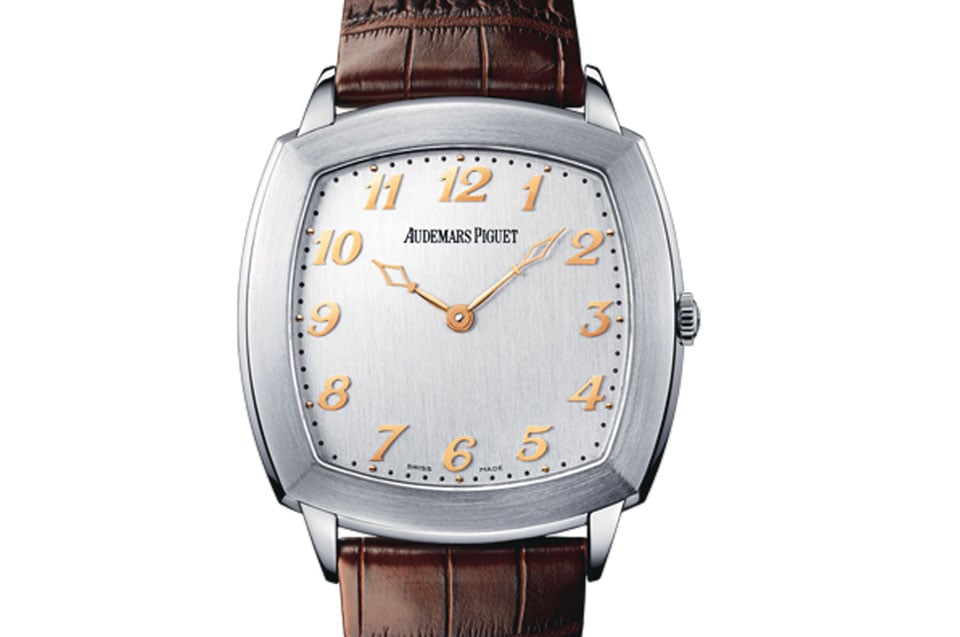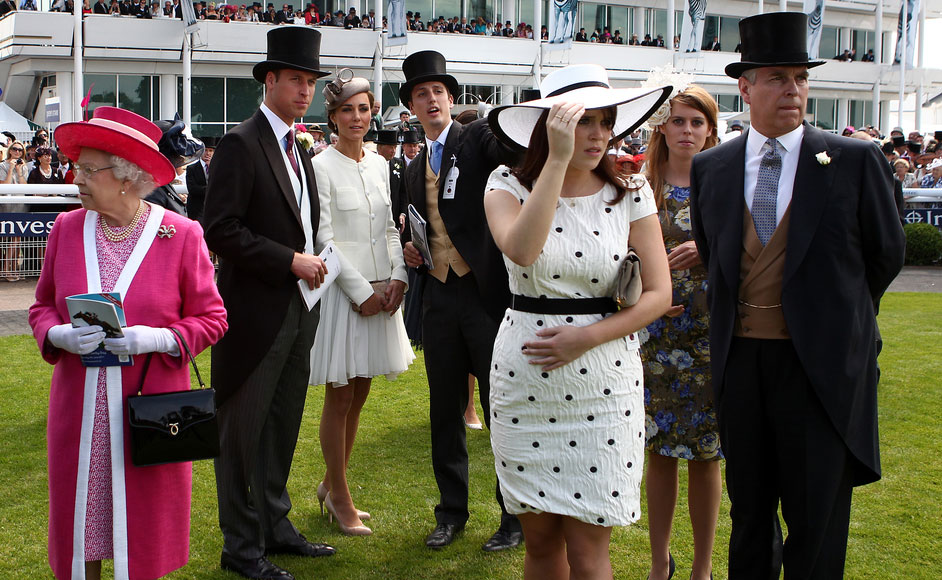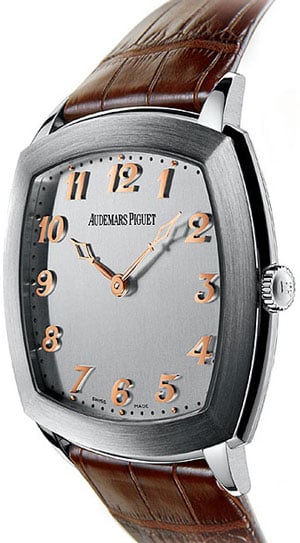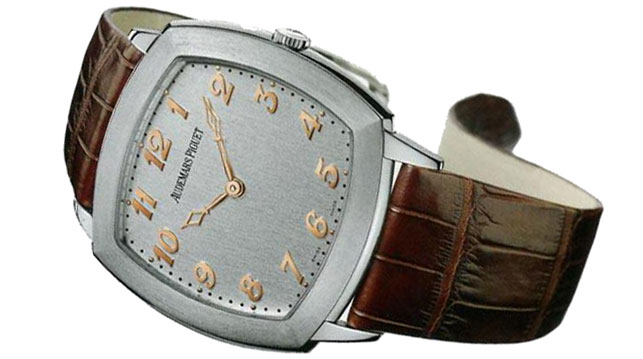Audemars Piguet Tradition Extra-Thin Selfwinding

I recently visited the Epsom Downs Racecourse for the very first time following an invitation, through the post, to attend the Investec Derby. The iconic horse race dates back to 1780 and is regarded by many as the world’s greatest flat race. Moreover, it has become a pillar of polite society. Irrespective of whatever troubles or economic woes befall the nation, a fine summer’s day provides the perfect opportunity to sample this most quintessentially English institution and momentarily set aside one’s worries.
There is excitement and splendour in seeing equine athletes galloping towards the finishing line. Her Majesty Queen Elizabeth II is often in attendance with other members of the Royal Family. Etiquette and decorum are essential if traditions are to be maintained. Indeed, the dress code required of those who frequent the Queen’s Stand on the day of the Investec Derby is clearly outlined.

I was keen to ensure I did not commit the minutest faux pas. For example, whilst gentleman can wear black or grey morning dress, black is de rigueur. A black top hat should be worn on the balcony of the Queen’s Stand or whenever outside. I recall my school days when an ill-informed choice of trouser or coat could spell ridicule and humiliation. Whilst I am sure my fellow guests would not be so cruel, I wanted to ensure I conformed with tradition.
I elected to visit New & Lingwood on Jermyn Street and seek some informed advice. The attentive service is what I have come to expect from this wonderful emporium of sartorial elegance. Naively, I intended to match my pocket square to my tie. Fortunately, my attentive host advised against this, remarking it was “bad form” and the social error was duly avoided. A white pocket square was purchased and a self coloured tie was selected. I attended the Investec Derby and adroitly navigated potential faux pas with etiquette duly respected.

I am a firm believer that traditions should be respected. Traditions are something Audemars Piguet know much about. The company has been in trading since 1875, creating some of the finest examples of haute horology in existence. There are many traditions which are specific to this famous resident of the Vallée de Joux.
Audemars Piguet is world renown for its complicated timepieces. Jumping hours and striking timepieces are just two areas of expertise which have resulted in the brand, from Le Brassus, being regarded as one of the three grand dames of haute horology along with Patek Philippe and Vacheron Constantin.
Since 1972, the company has become known for the remarkable and arguably one of the most famous sports watches of all time, the Royal Oak and later, the Royal Oak Offshore (1993). However, visiting the exceptional Audemars Piguet Museum in Le Brassus, one is reminded of their rich and diverse catalogue of models.
I am a fan of the exceptional design of the Royal Oak and the timeless aesthetics penned by the late Gérald Genta. Nevertheless, I am sometimes saddened that several of the other gems within the Audemars Piguet range do not always attract their due share of adoration.
At SIHH 2013, the brand revealed its Tradition Extra-Thin Selfwinding. It is available in platinum or 18-carat pink gold. Whilst both models are exquisite, this review focusses on the platinum model.
The dial
The opaline dial is blessed with a comely classicism and delicate execution. It is intrinsically graceful, featuring pink gold applied Arabic numerals.
The 18-carat pink gold hour and minute hands are open-worked at their tip. They converse with the wearer with clear diction in a restrained tone. Their majestic form, with curved tips, are understated yet luxurious.

Framing the dial are discreet, yet highly legible, minute markers. Each five minute integer is marked with an applied round pink gold dot. The intervening integers are marked with a flush black dot, simple and modest.
Beneath noon the brand’s soubriquet is presented in black text, cleanly contrasting with the opaline canvas. Audemars Piguet have not cluttered the dial with extraneous details. The artistic subtlety of the vista presented is very alluring and matches the appeal of a soothing water colour adorning a gallery wall.
The case
Platinum is the most noble of metals and seems befitting for this laudable lesson in fine watchmaking. The case with a 43 mm diameter resembles a cushion-shaped pocket watch of the 1920s which resides in the Audemars Piguet museum. The depth of the watch is a mere 6.60 mm, resulting in a very agreeable fit with the wrist.

A sapphire caseback reveals the matchless movement within. Indeed, the spectacle presented surfeits my appetite for the sight of exceptional finissage. Framing the sapphire crystal is a brushed caseback. Audemars Piguet have masterfully mixed polished and satin-brushed surfaces to create a sublime outcome.
The movement
The Calibre 2120 – by the way the same caliber as the aforementioned Royal Oak Extra-Thin utilizes – is a manufacture movement crafted by the skilled artisans. They work in an atelier which sits adjacent verdant fields and aquamarine skies in an unspoilt region of the Jura. This is a region where the tradition of watchmaking has been upheld for generations.
One glimpse at the 21-carat gold oscillating weight will enchant the most discerning purists. It is open-worked, embracing a similar design to the tips of the aforementioned hour and minute hand. The bi-directional oscillating weight runs on four jewels for optimal winding. The Calibre 2120 contains a total of 212 components.

Traditions are once again respected. In early part of the 20th century, Audemars Piguet was known for its ultra-thin movements. The movement in the Tradition Extra-Thin Selfwinding measures only 2.45 mm in depth.
The frequency of the balance wheel is unusual, oscillating at 19,800 vph (2.75 Hertz). However, one aspect of the watch which is not unusual is the finishing. It is typical of the elevated standards we have come to expect of Audemars Piguet.
The bridges are decorated with Côtes de Genève motif and the mainplate features perlage. Close examination of the bridges reveals polished bevels, satinbrushed edges and further perlage on the recesses.
Those customers who seek greater individuality can request bespoke decoration of the oscillating weight.
Conclusion
I am not averse to modernity and wholeheartedly embrace technology. However, as you amass more rings around your trunk, you realise that some aspects in life are newfangled and half-baked. Some may accuse me of being a laggard, but not all traditions should be abandoned in favour of change. Change for change’s sake can be futile and often renders ideas intrinsically obsolete.
I respect tradition. I lament the loss of innocent times, chivalry and good manners. Audemars Piguet have appealed to my sense of horological probity, creating a timepiece which pays due reverence to tradition whilst delivering a tasteful timepiece applicable to a new generation.

Audemars Piguet Tradition Extra-Thin Selfwinding – Reference: 15160PT.OO.A092CR.01
- Case: Platinum; dimensions 43.00 mm; height 6.60 mm; water resistant to 2 bar (20 metres); sapphire crystal to front and caseback.
- Functions: Hours; minutes.
- Movement: Calibre 2120, self-winding; frequency 19,800 vph (2.75 Hz); 36 jewels; power reserve 40 hours; 212 parts.
- Strap: Hand-stitched crocodile strap with platinum AP folding clasp.




1 response
I love the shape; the slightly squared case design makes it unique from the Patek Philippe of similar shape which I find boring. It is quite elegant with in platinum with the rose gold markers and the burgundy band.
I have an AP from the 1990s that is of the traditional octagonal shape and the about 38 mm. It’s made of tantalum, darker and heavier than titanium. It has an 18K rose gold bezel, satin charcoal face and rose gold markers on a burgundy croc. band with deployant clasp. I love it. Do you think the more traditional size watches will ever come back? I just wonder if this beautiful watch is not at least 40 or 42 mm. is still a desirable piece. What is your opinion? Are the larger watches, of which I have a few, here to stay? Once they get beyond about 42 mm. I find them overstated.